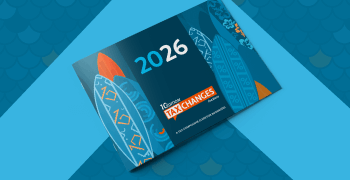If you’re a craft fair vendor, you probably need to collect sales tax
If you’re a craft fair vendor, you probably need to collect sales tax
From Seattle to Miami, craft shows, festivals, and fairs are ramping up for the holidays: the 30th Annual Boston Christmas Festival, the Philadelphia Museum of Art Contemporary Craft Show, the Renegade Craft Fair in San Francisco — just to name a few. But as vendors prepare to sell everything from art and jewelry to housewares and beyond, many still have questions about how to handle sales tax at craft fairs. If you plan to sell at a craft fair, you may be wondering when to charge tax, which products get taxed, how to handle tax in different states.
The truth is if you plan to make sales at a craft fair, you likely have to collect sales tax. Do you have the info you need to do that in the right way?
Read on for answers to some of the most frequently asked questions about taxing craft fair sales.
Should I collect sales tax?
The answer to this question is often, yes. Most states require individuals and businesses that make taxable sales to register, collect, and remit state and local sales tax, even when the sales are temporary (e.g. craft fair sales).
However, there are a few exceptions to that rule. For example, no state sales tax permit is required in the handful of states without a general sales tax: Alaska, Delaware, New Hampshire, Montana and Oregon. Alaska and Montana still allow local tax, so make sure you check on local sales tax requirements in those states.
In Arizona, event promoters can run all vendor sales through their sales tax license. In those cases, even though the promoters will remit tax to the state, individual vendors still have to charge and collect the right amount of tax.
In a nutshell, tax requirements for short-term or temporary vendors vary from state to state. It’s important to get informed before setting up shop in any state or in a new location in your home state. Tax experts at state departments of revenue can be a great resource. Tax automation software can also help. It automatically calculates the proper amount of tax for each location and makes filing easy.
How do I handle sales tax if I sell in multiple states?
We know sales tax policies vary by state. So don’t assume that what works in one state will work in others.
In some states, such as Ohio, one license/sales tax permit allows a vendor to sell in multiple locations. Yet other states, such as California and New York, require a separate sales tax license or permit for each location within the state. Illinois requires vendors traveling to one or more events to register with the Department of Revenue as a “changing location” filer. In addition, vendors may also have to comply with specific city or county requirements.
Then there are the tricky home rule states, like Colorado, Illinois, Louisiana, and West Virgina. In these states, local jurisdictions, like cities and towns, can regulate sales and use tax themselves. Because of that, different cities in the same state can have different tax rules and rates. If you sell in a home rule municipality, you may have to obtain a special seller’s permit and remit the state portion of tax to the state and the local portion of tax to the city. Learn more about home rule here.
Once you register to do business in a state, you have to collect and remit the correct amount of state and applicable local sales tax on all taxable sales. State rates are constant statewide. However, the total rate you have to charge can vary by location because local rates often differ. For example, the combined sales tax rate is 10% in La Mirada, California but 7.5% in Ventura County, California. Furthermore, different locations in one city can have different rates — Denver, Colorado, has more than a dozen rates. To see combined rates for your locations, register for this free, interactive sales tax map.
What crafts or food items are taxable?
Most items sold at arts and craft fairs are taxable in most states with a sales tax; if you’ve collected tax on your products in six states, there’s a good chance you’ll have to collect it in the seventh state. However, there are sometimes surprising exceptions to that rule. For example, Rhode Island provides an exemption for sales of work by writers, composers and artists residing in and conducting business in the state. Most clothing is exempt in Massachusetts, but any individual item of clothing costing more than $175 is taxable on the amount over $175, and “apparel designed solely for athletic or protective use is taxable.” Clothing costing less than $110 per item is exempt from New York State sales tax, but only exempt from local sales tax in certain jurisdictions. To keep vendors on their toes, Connecticut periodically changes its tax policy on clothing. You get the picture.
The taxation of food can be even more complex. Prepared food, such as restaurant meals and concessions, is generally taxable. Fresh fruits and vegetables are generally exempt. But sometimes the taxability of certain foods depends on whether or not utensils are provided; sometimes it depends on the percentage of “prepared food” sold by the establishment; and sometimes it’s even more quirky. For example, in New York, a bagel sold uncut and cold is exempt but a bagel sold sliced and toasted is taxable. In California, “food products” are generally exempt but effervescent water, which many would consider a food product, is taxable. And when it comes to figuring out how candy is taxed, it’s often necessary to read the list of ingredients.
Sales tax rates for food can also be different than sales tax rates for other taxable goods and services in the state. For example, Missouri provides a reduced rate of state tax for all food that may be purchased with food stamps, which includes fresh produce, breads, dairy products and meats but does not include “food that will be eaten in the store;” several municipalities in Alaska exempt non-prepared foods during the long winter but tax them during the summer (when hungry tourists invade the state); and a growing number of states and cities are imposing a special tax on sodas and other sugary beverages.
Learn more about the taxability of food and food products.
Should sales tax be included in the price? Which states allow this and which don’t? Is it required to be marked if it is included?
Some states permit businesses to absorb the tax (pay it themselves instead of passing it on to the consumer). And some states allow businesses to include tax in the selling price, provided the policy is clearly visible to consumers. However, it is against the law to absorb tax or include it in the selling price in other states.
As always with sales tax, policies vary from state to state. For example, aside from a few “limited exceptions for sales of admissions or concession sales of prepared food,” sellers in Nebraska are “not permitted to advertise or imply in any way that the sales tax, or any part of the sales tax, will be assumed or absorbed by the seller or that the sales tax will not be added to the selling price.” Yet it’s legal for Washington sellers to advertise the price as including sales tax, provided tax is separately stated on the invoice or receipt.
The safest bet in many cases is to keep the sales tax separate.
What solutions are there?
Sales tax can be crazily complex, but don’t let that tax dissuade you from selling your wares at craft shows, flea markets, and holiday bazaars nationwide. There’s no need for you to deal with sales tax manually — Avalara’s cloud-based automated sales tax solution applies the proper sales tax rate to each transaction, ensuring you’re sales tax compliant wherever you do business. And Avalara Trustfile integrates with numerous accounting, ecommerce, and point-of-sale (POS) systems.

Avalara Tax Changes 2026 is here
The 10th edition of our annual report engagingly breaks down key policies related to sales tax, tariffs, and VAT.
Stay up to date
Sign up for our free newsletter and stay up to date with the latest tax news.














